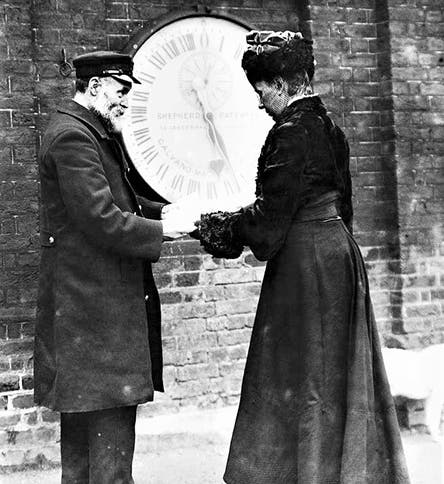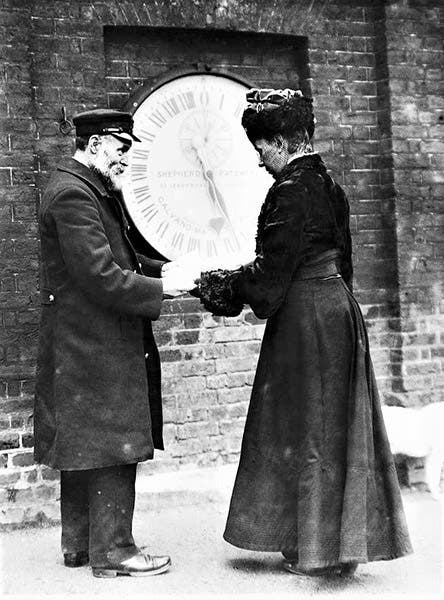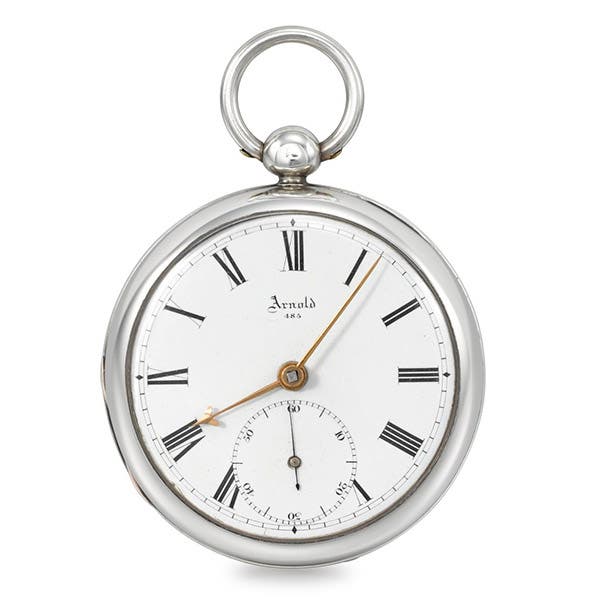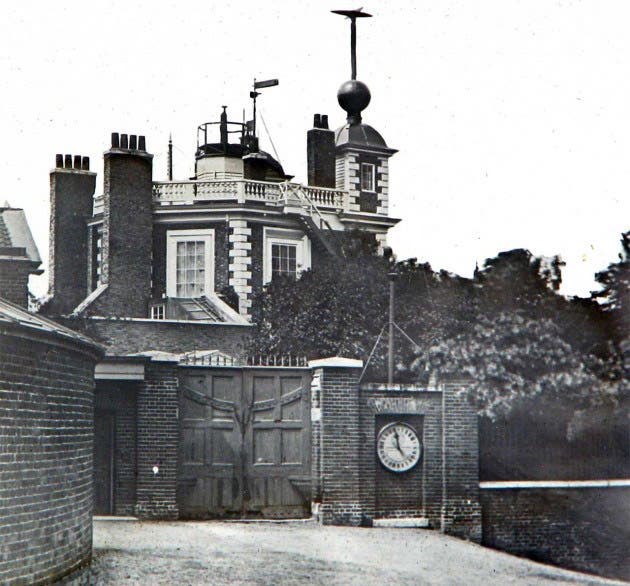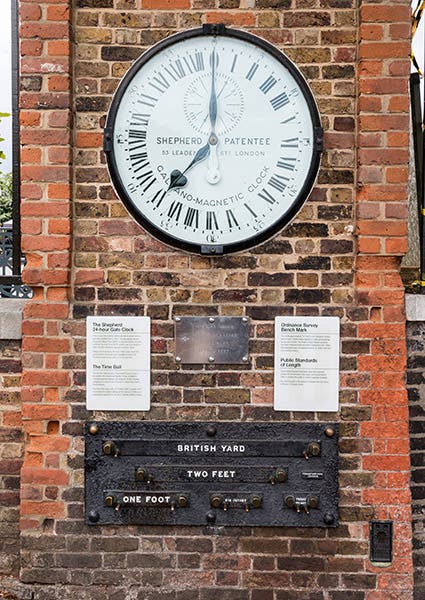Scientist of the Day - Ruth Belville
Ruth Belville, the "Time Lady," died Dec. 7, 1943, at the age of 89. For almost 50 years, Ruth sold the time to a select clientele in London. She would travel to Greenwich Observatory every Tuesday, where she would synchronize the family chronometer, a large pocket watch, to the master clock at Greenwich. Then she would take the train to London, dropping in one by one on her subscribers, who for various reasons needed to know the exact time, so they could set their timepieces from hers. She inherited this odd profession, and the chronometer, from her father, John Henry, who began distributing time in 1836, and then her mother Maria, who continued the practice after her father's death, until she retired in 1892 and Ruth took over.
When the time-sharing business began in 1836, the only way to know the exact time, unless you were inside the Observatory looking at the master clock, was to wait for the time ball to drop to the Observatory roof at exactly 1:00 PM each day. That was fine if you were on a ship on the Thames, but hardly of use to a watchmaker in London. John Henry, who was in charge of the time ball, was instructed by the Astronomer Royal to carry the exact time to London once or twice a week, so that London clockmakers and railroad managers could ensure that their timepieces were accurate. It is usually said that John Henry carried the time himself, but that is hardly likely, as he was one of the busiest employees at the Observatory, so he probably just set the watch and had a carrier take it to London.
Time selling became a family business in 1856, when John Henry (who never used the name Belville) died, and his widow Maria needed a means of support. Unable to convince the Observatory Board of Visitors to grant her a pension or buy John Henry’s records, she took on the job of selling time herself, with the permission of the Astronomer Royal, who at the time was George Airy. In 1852, the Observatory had installed a sympathetic clock, run by electrical signals from the master clock, on the exterior gate at Greenwich, so anyone could walk by and see the exact Greenwich mean time (third and fourth images). And the Observatory was now sending these same time signals to London, to a clock at London Bridge. But the Belville watch was more accurate than the unreliable telegraph, and apparently customers liked the personal service. So Maria, once a week, took the train to London and peddled the exact second to her clients, and did so for 36 years.
Ruth was only two years old when her father died, so she grew up knowing only her mother as time-vendor for London. When her mother was forced by health and old age to retire in 1892, Ruth petitioned the Astronomer Royal for permission to continue the business, and he was happy to grant that permission, as it cost the Observatory nothing and engendered considerable good will in London.
So Ruth continued the tradition of carrying Greenwich Mean Time to London, for 48 years, in spite of increased competition from electrical time services. The watch she synchronized once a week at Greenwich was the same one her father and mother had used, a chronometer crafted by John Arnold, a noted London clockmaker, in 1794, and affectionately known to Ruth and all of Ruth's customers as "Arnold" (second image). Arnold, whose full name was Arnold 485/786, ticked faithfully for the Belville family for 104 years and was said to be accurate to one-tenth of a second, considerably more precise than any telegraphed electrical time signals. After Ruth’s death, Arnold passed to the Worshipful Company of Clockmakers in London. Most accounts describe it as still there, but at some time in the not-too-distant past, it was relocated to the Science Museum in London, where you can see it now (second image).
If you would like to know more about the Time Lady and her father and mother, I highly recommend the book: Ruth Belville, The Greenwich Time Lady, by David Rooney (2008), which the Library has in its collections.
William B. Ashworth, Jr., Consultant for the History of Science, Linda Hall Library and Associate Professor emeritus, Department of History, University of Missouri-Kansas City. Comments or corrections are welcome; please direct to ashworthw@umkc.edu.

